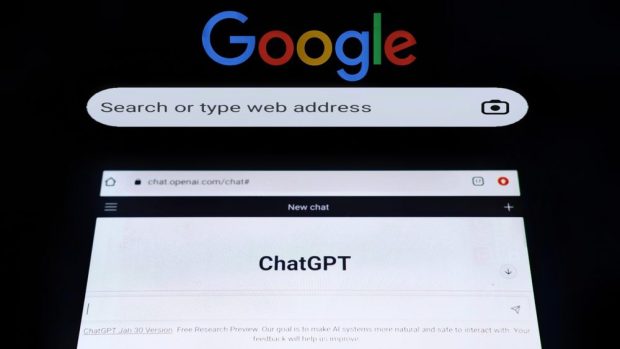Why the Whole World Is Bullish on Generative AI

The world is entering a new age of generative AI, and there’s no going back.
This, as even a flubbed demonstration of the next-generation artificial intelligence (AI) technology can have mammoth ripple effects — including knocking off $100 billion in value from a company like Google parent Alphabet’s market cap Wednesday (Feb. 8) when the tech giant’s new “smarter AI” chatbot, Bard, shared inaccurate information in response to a query.
That’s how high expectations around the emergent machine-learning tool are.
Technical innovations powered by generative AI have taken on a rapidly increased prominence across the marketplace due to the viral success of OpenAI’s chatbot ChatGPT, which Alphabet competitor Microsoft has poured billions of dollars into.
Industry observers have noted that Microsoft’s advances in deploying the future-fit AI technology across its software suite may have been what rushed Alphabet to bring Bard to market.
Entrenched blue-chip tech giants, whose business valuations have been hammered over the past year, are now turning to generative AI as a way to reclaim both their innovation accolades and the high-growth valuations that bleeding-edge organizations tend to command.
Microsoft announced Tuesday (Feb. 7) that it was launching an all-new, AI-powered Bing search engine and Edge browser, both designed to deliver better search, more complete answers, and the ability to generate content by acting as an “AI-copilot” for increasingly holistic online experiences.
The tit-for-tat developments between tech giants are part of a growing war over the commercial potential of generative AI to solve some of the most important problems in business.
Read More: ‘Buzzword Bingo’ Obscures Where True Value of AI Technology Actually Lies
Those firmly in the hype corner of generative AI view it as an emergent technology so powerful it will inevitably change the course of every industry, evolving the fundamental interactions users have with connected devices around them by making those devices far more efficient and intuitive to use.
PYMNTS has written previously on how AI’s most valuable near-term applications are likely more pedestrian than some of the five-years-from-now moonshots claiming it, like those using a combination of AI and deepfake technology to fill virtual worlds with digital puppet avatars.
That’s because AI software tools are already taking on several more manual and mundane tasks across many payments, banking and financial activities.
The technology is used by organizations to combat fraud, underwrite credit, and manage payables and receivables and cash flow, all with better and more precise outcomes. According to a recent Bloomberg report, more than one in four white-collar professionals used generative AI tools to assist with and even complete work tasks.
In today’s environment, intelligent software and AI tools have already proven themselves to be a key value-add to the CFO office, as they allow finance teams to think “less like bookkeepers, and more like businesspeople,” OpenEnvoy CEO Matt Tillman said to PYMNTS in an earlier conversation.
The timing has never been better for generative AI to take center stage, as research in the PYMNTS report “Digital Payments Technology: Investing in Payments Systems for the Digital Economy” finds that CFOs making systems investments in 2023 are highly focused on realizing new levels of efficacy.
The AI and Payments Connection
It’s been nearly three years since the pandemic brought with it a hyper-rapid transformation of commerce, evolving the purchase journey beyond physical retail to the mainstream primacy of online shopping.
Key to that success has been the silent workhorse of AI, streamlining everything in ecommerce from chat to checkout by enabling businesses to provide and increasingly personalized omnichannel experience while removing historical payment frictions and blunting common cart abandon triggers.
As PYMNTS wrote previously, given Google’s full-court press on Google Pay and its digital Google Wallet, it’s hard to imagine that the tech giant won’t look to capture disruptive synergies across its AI software efforts and its digital payment tools.
In the B2B space, companies managing financial transactions, including loan closings, invoice payments, transfers, ad-hoc wires and more, are continually looking for ways to bring efficiency to their cash flow processes, as well as ways to glean game-changing insights from the massive quantities of data being generated across transactions.
Designed explicitly for synthesizing billions of data points into curated snippets in a matter of milliseconds, AI technology is well-positioned to help businesses do exactly that.
AI for eEmployers
Much has been made about AI coming for people’s jobs, replacing everyone from screenwriters to foremen in a collar-blind labor transformation.
PYMNTS’ CEO Karen Webster picked AI as one of her “Eight Trends That Will Shape Payments, Retail, and the Digital Economy in 2023,” citing the tech’s potential in creating and socializing the knowledge base needed to equip any worker in any industry with the tools to deliver a consistent, high-quality level of service quickly, and at scale.
Across all industries, the lack of skilled workers is cited as an impediment to business growth, becoming especially acute as technological innovations require a different workforce.
Applications of generative AI offer the transformative possibility to rapidly and repeatedly level-up employees’ on-the-job skills with immersive and responsive training modules, as well as appropriately arm employees with key data that provides a consistent experience to customers and clients by essentially making every employee an expert veteran of their field, even if it’s their first day.
Observers are particularly excited about these applications within healthcare, where doctors, nurses and other providers can tap into data sources that inform better, more consistent and more timely diagnoses, treatments, and decisions.
As generative AI outcomes continue to get smarter, the technology’s use cases will continue to expand, and the world as we know it will continue to transform.
